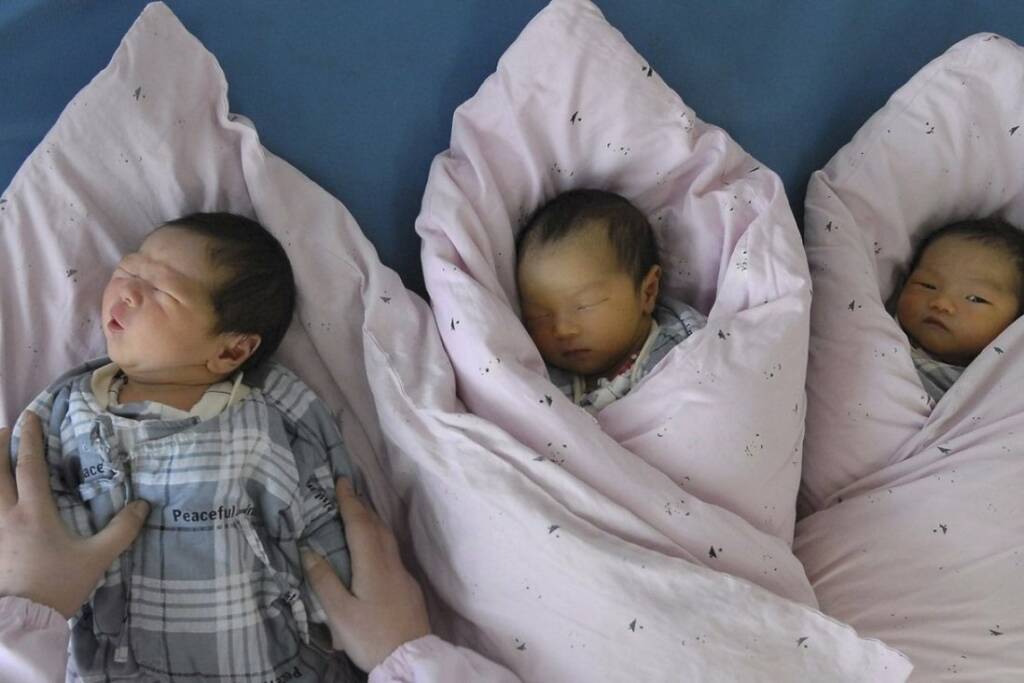China will allow all married couples to have up to three children in an effort to avoid a population problem caused by falling birth rates. The Politburo of the Communist Party resolved on Monday to relax the present two-child limit but did not indicate when the change would take effect.
In 2016, China ended its long-standing one-child policy in an attempt to reverse the country’s declining birth rate, but the trend continued. With the labour pool in the country decreasing and the population ageing fast, the party leadership decided to loosen the birth policy even more.
According to the most recent census data, the country’s population of over 1.4 billion people continues to grow in 2020, but a slump appears to be on the way. According to the Communist Party’s Global Times, a demographic expert anticipated that the turning point will occur in 2022, five years earlier than previously expected.
The number of people aged 65 and up increased by 60% between 2010 and 2020. Their population makes up 13.5 per cent of China’s total, barely shy of the globally recognised 14 per cent criterion for an ageing society. On the other hand, China’s rapid ageing has resulted in a steep reduction in the working population, which has fallen by 4% since its peak in 2013.
This shift in demographics threatens to deplete funds for pensions, medical care, unemployment insurance, and other social security services. Government expenditures accounted for 25.5 per cent of China’s social security fund’s budget in 2021, up 3 percentage points from 2015.
The dwindling population of younger people casts a veil over President Xi Jinping’s economic agenda of domestic expenditure. In an April working paper, the People’s Bank of China found that technological advancements and more education will be insufficient to compensate for an ageing population. The central bank has called for a swift reaction to the issue.
Politburo’s policies have emphasised plans to raise the statutory retirement age in order to secure enough workers to staff stores and keep industries running. However, the public has reacted negatively to the proposal because it involves raising the age of pension eligibility at a time when the government is attempting to strengthen the social safety net, as well as potentially denying possibilities to younger job seekers. Most importantly, eliminating limitations on larger families would not affect the perception that one child is sufficient in many urban households.
Some studies indicate that allowing all households to have two children would raise China’s total fertility rate — the number of children born over a woman’s lifetime — above 2. However, the gain was short-lived, with births climbing just in 2016 before falling for four years in a row starting in 2017.
Last year, the fertility rate fell 18% to 1.3, the lowest since 1961, when the country was still recovering from the Great Leap Forward and the resulting famine. A turnaround looks improbable, given that the number of women of reproductive age is anticipated to drop by 40% by 2025.
A significant element is the cost of raising children. Daycare facilities and public preschools are in scarce supply in China. Children in metropolitan areas frequently begin cram school before beginning formal education. In larger cities like Beijing and Shanghai, the cost of a child’s education from kindergarten through high school is projected to be 2.5 million yuan ($392,000).
Last year, per-capita disposable income in cities was just under 440,000 yuan, or $69,000. Families have been burdened by pricey mortgages as apartment prices have skyrocketed, despite the fact that salaries have just recently recovered following the coronavirus outbreak.
The Politburo outlined actions to help parents raise their children, including expanding daycare facilities and lowering education prices. It also suggested that maternity leave and insurance be improved to make it simpler for women to have children. A drop in marriages, which has been on the wane for seven years and is expected to continue through 2020, is also contributing to the continuous reduction in births.
China’s vast population – the world’s largest — has long been a key source of economic progress. As a result of how governments and leaders around the world deal with changing demographics, the economy and geopolitics will alter. Low birth rates have an impact on labour supply and demand, can stifle entrepreneurship and innovation, and can lead to monetary policy shifts and a decline in economic capability. And China will face all these consequences due to the short-sightedness of the population control policies which has for an extended period of time altered the demographics in the country.
